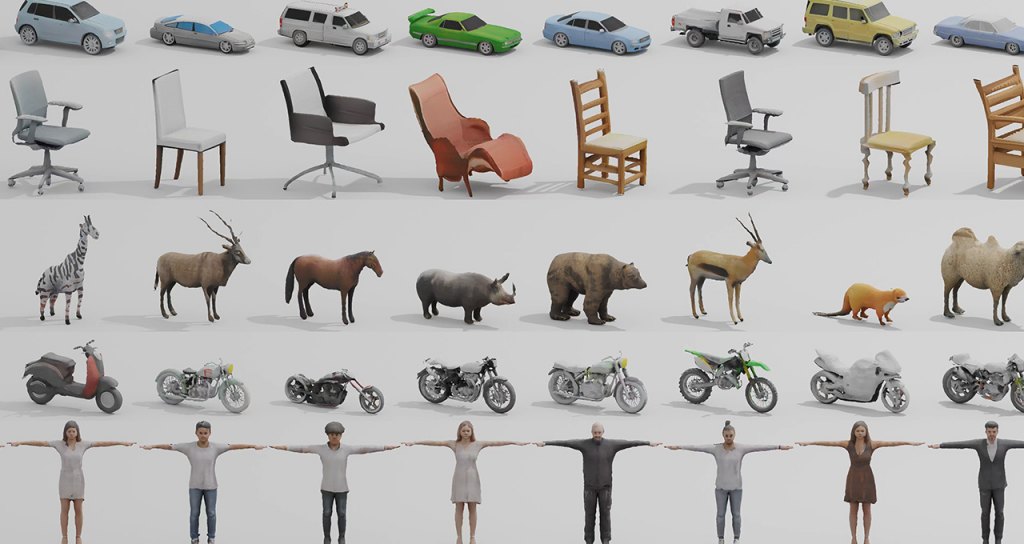
Credit: Nvidia
With the metaverse in development and the growing popularity of mixed reality, Nvidia developed GET3D, a new artificial intelligence model for 3D worlds and sprites. The model can create 3D characters, animals, furnishings, structures, vehicles, and various shapes at a rate of 20 objects per second with a single GPU. Nvidia also introduced a couple of language model cloud services for customizing AI applications to a wide range of functions. The company is looking to enter the SaaS space, particularly the AI language model as a service segment.
According to Isha Salian, a member of Nvidia’s communication team, GET3D bears the capacity to create complex geometric detailing and high-fidelity textures. The shapes are designed “in the form of a triangle mesh” embellished with textured material. Despite its detailed approach to visuals, the model is able to take in about a million images with an A100 Tensor Core GPU.
As a result, graphic and game designers can quickly incorporate GET3D images into video games, videos, and other media. The model is able to build the 3D sprites into various formats to boost compatibility. Those developing the metaverse and open-world games can leverage GET3D to create unique buildings, items, and other striking details much easier than by producing these under normal means.
Nvidia provides another AI-powered graphic design tool, StyleGAN-NADA, to further stylize GET3D sprites. In using the platform, designers can tweak the appearances of objects and characters. For instance, facial features can take on certain textures and hues while structures can be made to look like haunted houses and vehicles can brandish stylish exteriors.
Besides GET3D, Nvidia built two other language model cloud services to branch out into SaaS.
AI Language Model as a Service
Nvidia aims to provide solutions for building large language models (LLMs) and offering scientific solutions, respectively with its two new cloud AI services. These are the NeMo Large Language Model Service and the BioNeMo LLM Service.
The NeMo Large Language Model Service enables users, with a training method called prompt learning, to customize foundation models. To put it more simply, users can use the service to incorporate large language models and accelerate the deployment of AI applications in areas like chatbots, code development, and content generation. The service expands the use cases of LLMs and vastly hastens the customization of LLM models. With NeMo LLM Service, users can perform customizations within minutes or hours, much faster than the weeks or months required when manually training a model.
Meanwhile, the BioNeMo LLM service comes as a cloud API that leverages LLM for scientific applications that include biomolecular property predictions, finding trends and patterns in biological sequences, and other related activities. Medical researchers and pharmaceutical companies can leverage the service to discover new treatments and accelerate drug production.
Aside from their primary features, the two models grant users access to prebuilt and custom models, given their API framework. This speeds up the customization and application deployment processes even further. Both services, according to Nvidia, will be available for early access in October.
With the development of GET3D and its two LLMs solutions, Nvidia further expands the use cases of AI and possibly brings modern society a step closer to the metaverse. But even without the metaverse, these solutions are set to make a difference in their respective fields.





















Leave a comment!